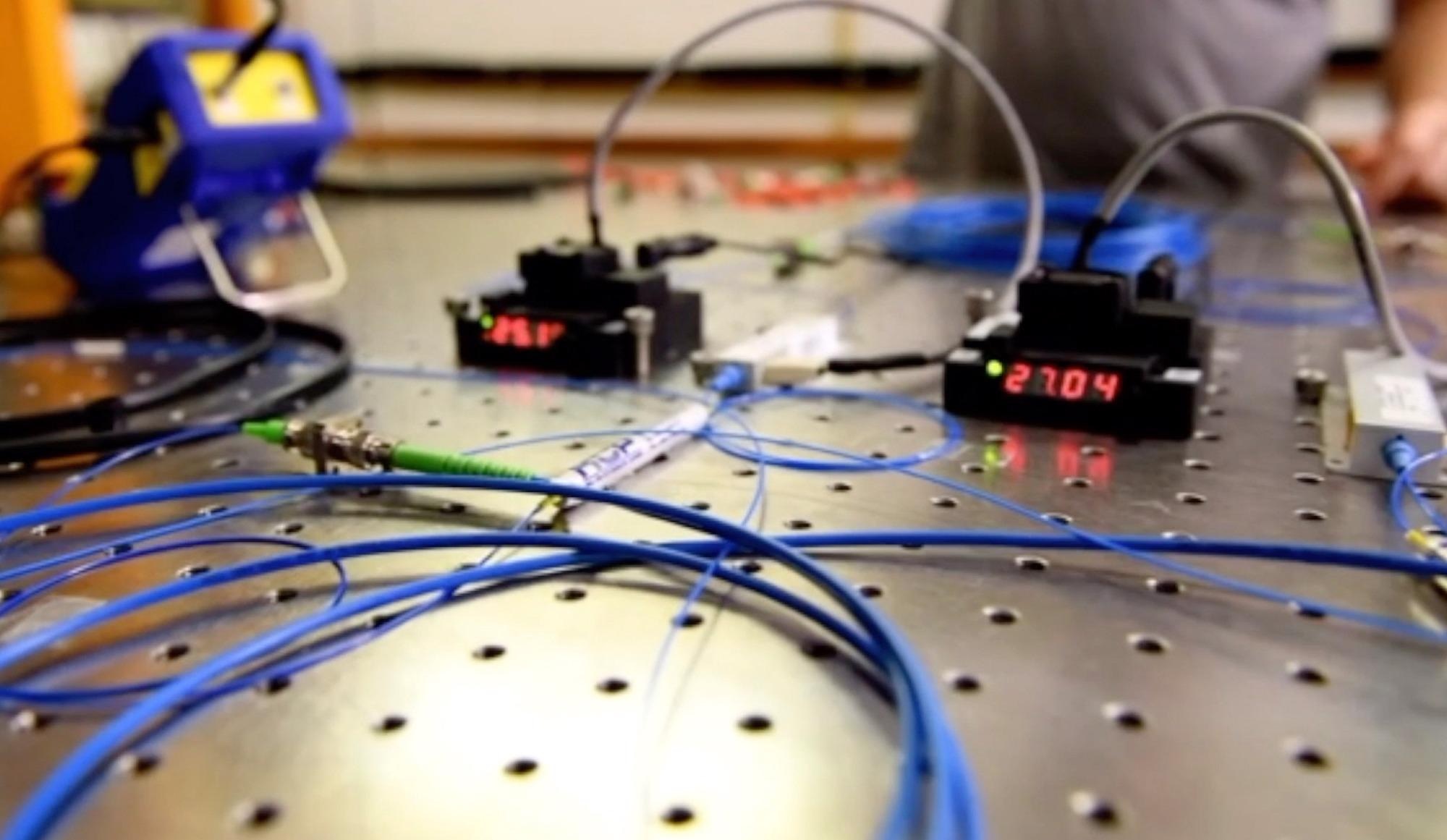Dec 16 2020
Precision sensing, data storage, and computing could be completely revolutionized by a viable quantum internet—a network where information stored in qubits is shared over long distances via entanglement—leading to a new communication era.
 In a demonstration of high-fidelity quantum teleportation at the Fermilab Quantum Network, fiber-optic cables connect off-the-shelf devices (shown above), as well as state-of-the-art R&D devices. Image Credit: Fermilab.
In a demonstration of high-fidelity quantum teleportation at the Fermilab Quantum Network, fiber-optic cables connect off-the-shelf devices (shown above), as well as state-of-the-art R&D devices. Image Credit: Fermilab.
Researchers at Fermilab, a U.S. Department of Energy Office of Science national laboratory, and their collaborators took a crucial step this month toward achieving a quantum internet.
In an article published in PRX Quantum, the researchers demonstrate, for the first time, a sustained, long-distance (fiber measuring 44 km) teleportation of photon qubits with a >90% fidelity. Photons are quanta of light. The qubits were teleported across a fiber-optic network with the help of the most sophisticated single-photon detectors and off-the-shelf equipment.
We’re thrilled by these results. This is a key achievement on the way to building a technology that will redefine how we conduct global communication.
Panagiotis Spentzouris, Scientist and Head of the Quantum Science Program, Fermilab
Spentzouris is one of the co-authors of the paper.
In quantum teleportation, quantum states are transferred in a 'disembodied' way from one point to another. A qubit is quantum-teleported by using quantum entanglement, where two or more particles are inseparably connected to each other. The encoded information is teleported by sharing an entangled pair of particles between two separate locations, irrespective of the distance between them.
The collaborative team—including researchers from Fermilab, AT&T, Caltech, Harvard University, NASA Jet Propulsion Laboratory, and the University of Calgary—was successful in teleporting qubits on two systems: the Fermilab Quantum Network (FQNET) and the Caltech Quantum Network (CQNET).
Caltech’s public-private research program on Intelligent Quantum Networks and Technologies (IN-Q-NET) designed, developed, commissioned and deployed the systems.
We are very proud to have achieved this milestone on sustainable, high-performing and scalable quantum teleportation systems. The results will be further improved with system upgrades we are expecting to complete by Q2 2021.
Maria Spiropulu, Shang-Yi Ch’en Professor of Physics, Caltech
Spiropulu is also the director of the IN-Q-NET research program.
FQNET and CQNET feature near-autonomous data processing and are compatible with both current telecommunication infrastructure and future quantum processing and storage devices. Scientists have been using them to enhance the fidelity and rate of entanglement distribution, with a focus on complex quantum communication protocols and basic science.
The achievement is close on the heels of the U.S. Department of Energy’s launch of a blueprint for a national quantum internet, at a press conference in Chicago.
“With this demonstration we’re beginning to lay the foundation for the construction of a Chicago-area metropolitan quantum network,” stated Spentzouris. Fermilab has been designing, the Chicagoland network, or the so-called Illinois Express Quantum Network, in collaboration with Argonne National Laboratory, Caltech, Northwestern University, and industry partners.
This study was financially supported by DOE’s Office of Science through the Quantum Information Science-Enabled Discovery (QuantISED) program.
The feat is a testament to success of collaboration across disciplines and institutions, which drives so much of what we accomplish in science. I commend the IN-Q-NET team and our partners in academia and industry on this first-of-its-kind achievement in quantum teleportation.
Joe Lykken, Deputy Director of Research, Fermilab
Journal Reference:
Valivarthi, R., et al. (2020) Teleportation Systems Toward a Quantum Internet. PRX Quantum. doi.org/10.1103/PRXQuantum.1.020317.